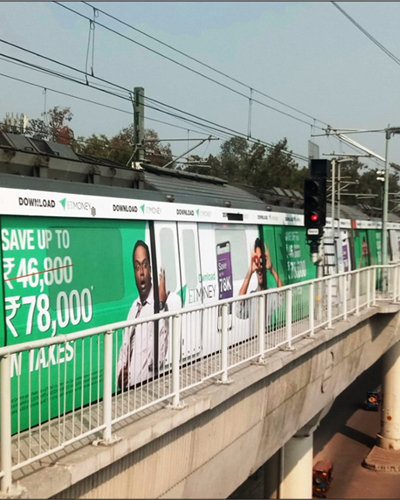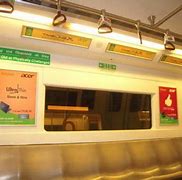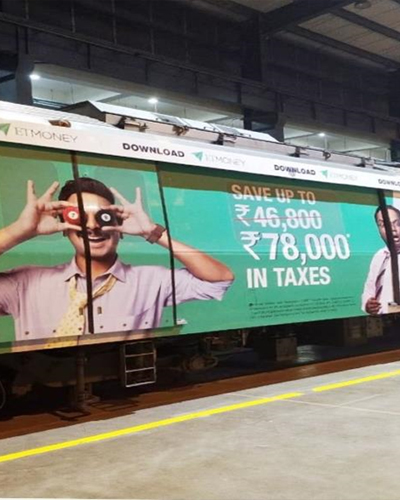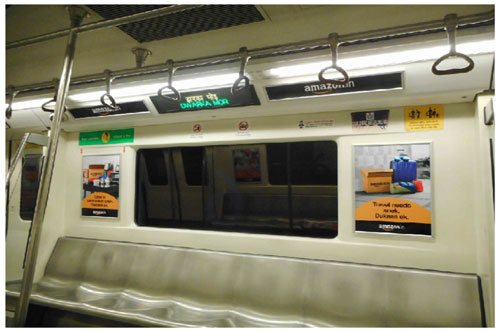Metro Train Advertising
Metro train advertising has emerged as a powerful and dynamic avenue for brands to connect with their target audiences in urban environments. As cities grow increasingly congested and populations rely more heavily on public transportation, metro transit systems have evolved into prime real estate for advertisers seeking to capture the attention of a captive audience. Let's delve into the world of metro train advertising, exploring its benefits, costs, and the role of specialized agencies such as Metro Train Advertising Agency and DMRC Advertising Agency.
Advertising Options




The Power of Metro Train Advertising
Metro train advertising offers unparalleled advantages for brands looking to enhance their visibility and engagement. With millions of commuters relying on metro systems for their daily commute, advertising in these spaces ensures exposure to a diverse and captive audience. From busy professionals to students and families, metro trains cater to a broad demographic, providing advertisers with the opportunity to reach a wide range of potential customers.
One of the key advantages of metro train advertising is its ability to deliver repeated exposure to commuters. Unlike traditional mediums where ads may be easily overlooked or ignored, metro train advertisements are strategically placed in high-traffic areas, ensuring that they are seen multiple times throughout the day. This repeated exposure helps reinforce brand messages and increases the likelihood of audience engagement and recall.
Understanding Metro Train Advertising Costs
Metro train advertising costs vary depending on factors such as the location, duration, and format of the campaign. Advertisers can choose from a variety of advertising options, including train wraps, platform displays, digital screens, and interior posters. Each option comes with its own pricing structure, with factors such as visibility and reach influencing the overall cost.
For example, advertising on prominent locations such as train exteriors or station entrances typically commands higher prices due to increased visibility. Similarly, campaigns run during peak hours or on popular metro lines may incur higher costs compared to off-peak or less frequented routes.
While metro train advertising costs may initially seem daunting, it's essential to consider the significant return on investment (ROI) that this form of advertising can deliver. With the ability to reach millions of commuters daily, metro train advertising offers unparalleled exposure and brand visibility, making it a cost-effective option for advertisers looking to maximize their impact.
The Role of Metro Train Advertising Agencies
Metro Train Advertising Agencies play a crucial role in helping brands navigate the complexities of metro train advertising. These specialized agencies, such as DMRC Advertising Agency, possess the expertise and industry knowledge needed to plan, execute, and optimize successful advertising campaigns on metro transit systems.
From conducting market research and identifying target audiences to negotiating ad placements and managing campaign logistics, Metro Train Advertising Agencies handle every aspect of the advertising process. By leveraging their relationships with metro authorities and advertisers, these agencies ensure that brands achieve maximum visibility and impact with their campaigns.
In addition to campaign execution, Metro Train Advertising Agencies also provide valuable insights and analytics to help brands measure the effectiveness of their advertising efforts. Through detailed reporting and analysis, advertisers can gain valuable insights into audience engagement, ad performance, and ROI, allowing them to refine their strategies for future campaigns.
Metro train advertising offers a unique and compelling opportunity for brands to reach and engage with their target audiences in urban environments. With the guidance of specialized agencies such as Metro Train Advertising Agency and DMRC Advertising Agency, advertisers can harness the full potential of metro train advertising to drive brand awareness, engagement, and growth.
